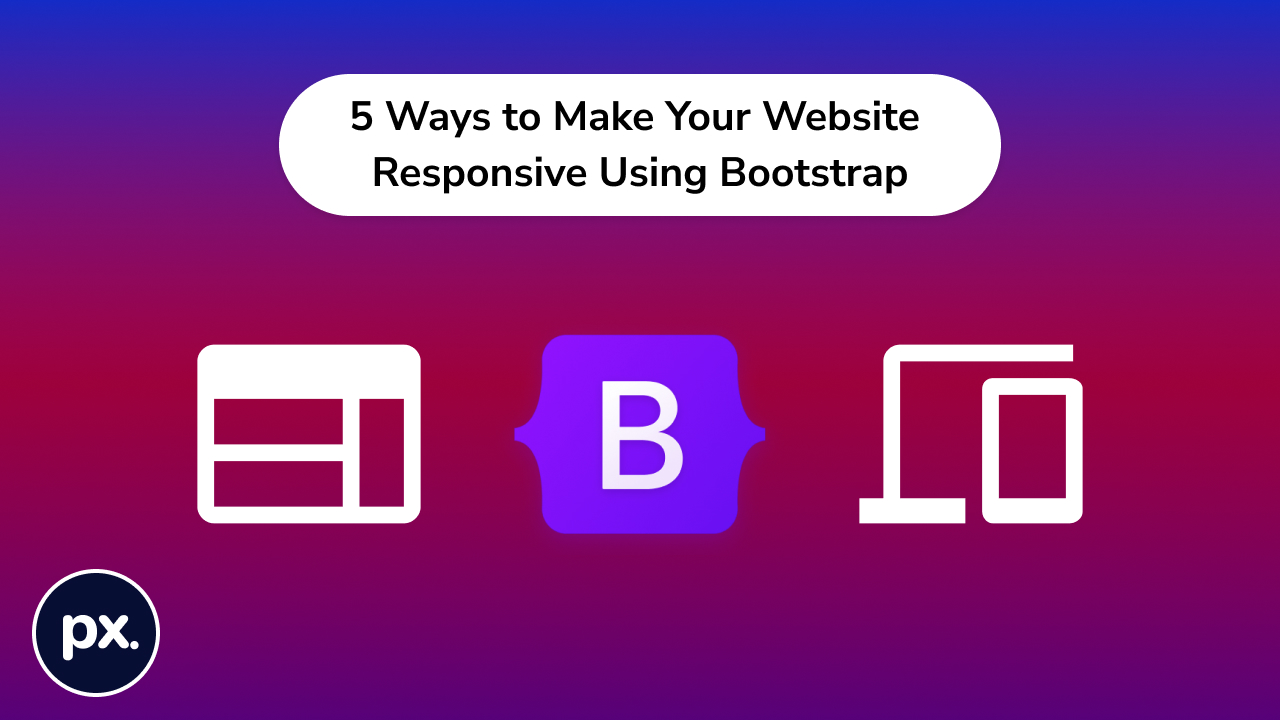A website that has no proper UI/UX is equal to a website that has no purpose. Have a look at the websites of Apple, GitHub, Dribble, and Cuberto. What do you think is shared between them? They are among the best responsive websites on the internet. Won’t you want your website to be listed under that tag one day? If yes, then you must know about the ways to make your website responsive using Bootstrap.
Now, you will be thinking, why only Bootstrap? In this article, we will answer every question you have about making your website mobile-friendly and responsive. Let’s move ahead, without wasting any time!
What is a Responsive Website?
A responsive website is a website that automatically adjusts its layout according to the size of your screen. It will resize, change colors, and even adjust content based on the device you are using.
For example, if you are viewing a website on your phone, then it will show mobile-friendly content like images and videos instead of just text. Responsive design is a must for any website to get considered by Google or any other search engine.
5 Reasons Why You Should Use Bootstrap!
Bootstrap is a free and open-source front-end framework for developing responsive, mobile-first projects on the web. This framework includes HTML and CSS-based design templates that are easy to customize. It also has pre-built components like navigation bars, buttons, form inputs, and more. Bootstrap offers a wide selection of themes as well as plugins that can help you add features like maps or social media integration to your site with ease.
The Bootstrap framework has been around since 2011 and continues to be one of the most popular frameworks for building websites today. There are over 5 million sites currently using it and it continues to grow in popularity every year.
Here are 5 reasons mentioning why you should use bootstrap:
- It helps you make a mobile-friendly and responsive website.
- You can use JavaScript plugins without actually learning JavaScript.
- It is one of the most popular frameworks in today’s industry.
- You can set a standard for the team to follow while making any website.
- You can leverage its 12-column form to better structure your website.
5 Steps to Create a Responsive Website Using Bootstrap
We all know, Bootstrap is a responsive framework for developing websites and web applications. It has a grid-based design, which makes it easy to create layouts for mobile devices. Here are 5 steps you need to follow to create a responsive website using Bootstrap. They are:
1) Viewport and Initial scale
The very step in making your website responsive is to add the following code to the web pages. This code will guide the browser to adjust the website as per the device.
<meta name="viewport" content="width=device-width" initial-scale="1.0">
2) Hook up the bootstrap
The next step is to link the bootstrap libraries. How to do it? By adding the code. However, you will first have to download bootstrap to the development folder and extract it. Within your main development folder, it will create two folders. You have to add the following code in the index.html just below the viewpoint meta tag.
<link rel="stylesheet" href="css/bootstrap.css">
3) Start with the Website Building
Website building is the foundation of how your website will look and perform. As we all know, the foundation needs to be perfect for any task. So, start building your website but keep the following points in mind before you start:
- Get the navigation part properly. Navigation does half of the work making website easy to use and responsive. For example, make sure you add a code that highlights the navigation bar when the user is on that page.
- Make the information area look noticeable. Confused? Well, keeping up with the information area means organizing the text using a div tag.
- Then comes the content part. Your website should have an adequate amount of content. And by content, we mean the one that has meaning and guides a viewer to its desired solution.
4) Use Flexible Images
When you upload an image to the website, it will automatically set the default height and width of the image. However, you can change its property to the auto for the height and for width using the percentage value rather than unit values. This will make your image responsive for any device.
5) Use Feature Media Queries
Media queries help your website adjust its layout per the device and screen sizes. However, it should be used with some breakpoints. Breakpoints help media queries to instruct websites when to change their layout. So, generate multiple different style sheets for media queries on when and under what conditions to change its layout for being responsive.
Conclusion on Ways to Make Your Website Responsive Using Bootstrap
This article was about how to make a website mobile-friendly. It discusses the different ways of making a website mobile-friendly using Bootstrap. This article has concluded that there are many ways in which you can make your website mobile responsive.
You can follow these steps to make your website mobile-friendly. However, you must make sure your users are your priority and provide them with a great experience. Check out PxDraft’s Bootstrap themes for any business and industry here.

Leave a Reply